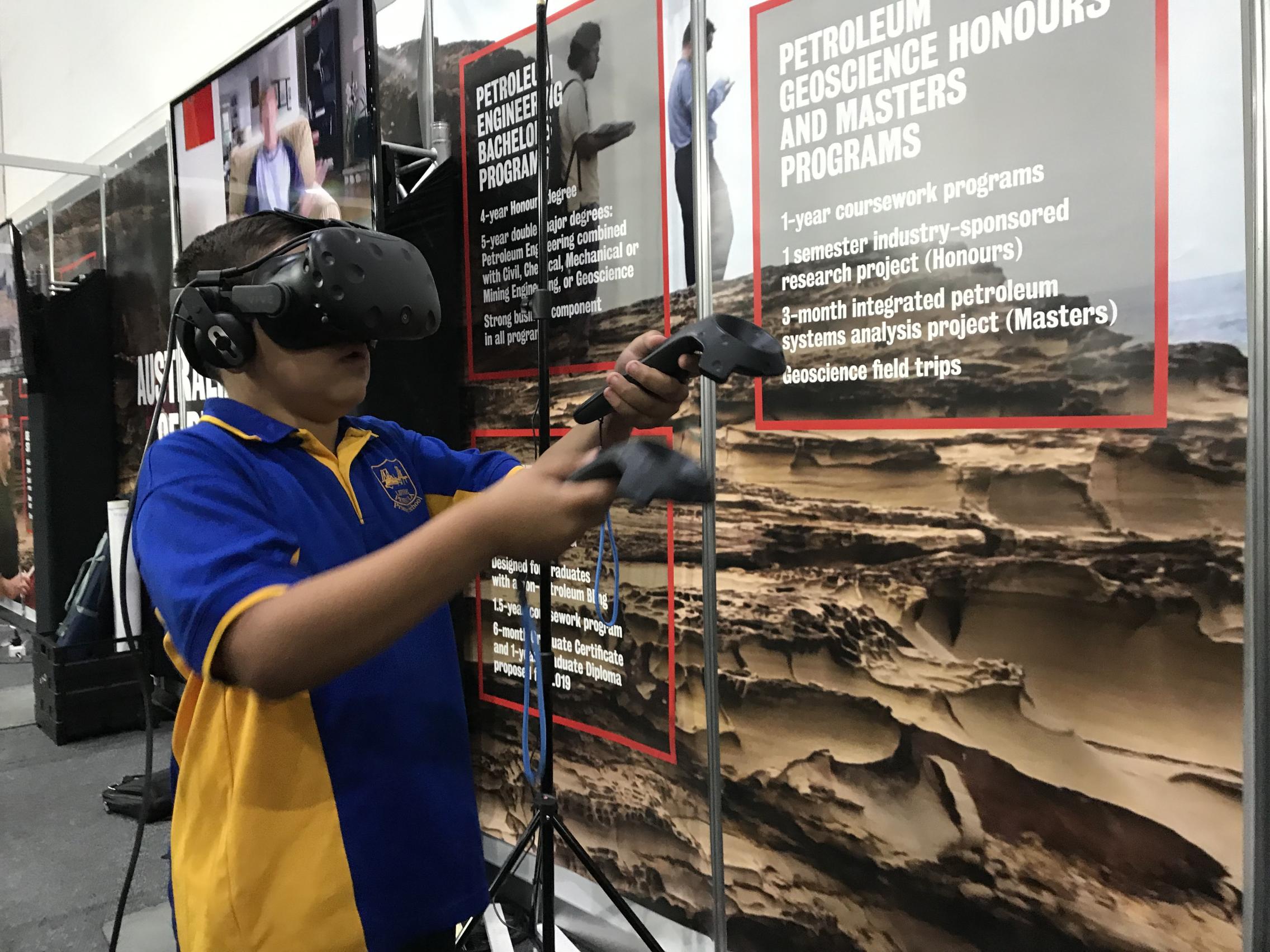Showcasing our technology future: Ingenuity 2019

More than 300 innovative projects exploring technology advances and solutions for our future society will be on show at the University of Adelaide’s Ingenuity 2019 expo on Thursday 31 October.
Ingenuity is an interactive expo of final-year and other projects by the University’s science, technology, engineering, and maths students. It is free and open to the public from 9.30 am to 3.30 pm at the Adelaide Convention Centre.
“At Ingenuity the students are demonstrating innovative ideas that could help find solutions for some of the problems and challenges of today.”Professor Katrina Falkner
More than 5000 primary and secondary students, industry, government, and members of the general public are expected to visit the showcase.
The University’s students are on hand to explain their work and its potential benefits for society.
“Ingenuity 2019 showcases the creative talents of our graduates and how they are ready to meet the engineering and technology industry’s needs for the future,” says Professor Katrina Falkner, Interim Executive Dean of the Faculty of Engineering, Computer and Mathematical Sciences.
“At Ingenuity the students are demonstrating innovative ideas that could help find solutions for some of the problems and challenges of today.”
Ingenuity 2019 is organised in five themes: future energy and resources; health society; our built and natural environments; securing our future; and transforming technologies.
Ingenious projects showcased at the event include:
• A bio-inspired autonomous underwater vehicle (AUV) that takes its inspiration from cuttlefish. The project team took inspiration from nature to leverage years of evolution to design and build a biologically inspired AUV with a movement system inspired by the fins of the cuttlefish. Manufacturing techniques such as 3D printing helped the team rapidly prototype their design. The craft uses motors to move arms connected to a flexible membrane to create a wave-like pattern.
• An innovative agricultural weed spraying system. A targeted Weed Identification, Mapping and Spraying System (WIMSS) implements computer vision and machine learning to identify, map and selectively spray weeds in real-time. Existing systems are incapable of identifying weeds and must apply herbicide across the entire paddock to ensure all weeds are controlled.
• A project to produce an electric fixed-wing, short take-off and landing air taxi that, unlike existing solutions, complies with current aviation standards. By utilising modified aircraft design methods for electric vehicles, the team has designed an aircraft capable of landing on rooftops and able to travel up to 75 km at 235 km/hr. They have produced a scale model of the designed aircraft from composite materials and tested it to demonstrate its functionality including take off, flight and landing.
• A project that aims to adapt the unique properties of superconductors for use in frictionless motion or non-contact interactions. Quantum Locking is a fascinating phenomenon where a ceramic material with unique properties, known as a superconductor, is locked in a permanent magnetic field when cooled with liquid nitrogen. The project investigated the quantum locking phenomenon using high-temperature superconductors.
Media Contact:
Crispin Savage
Senior Media and Communications Officer
The University of Adelaide
Mobile: +61 (0)481 912 465, Email: crispin.savage@adelaide.edu.au
